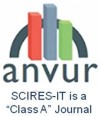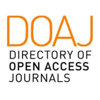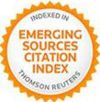Visualizing Leonardo and Michelangelo through digital humanities, reconstruction and interaction design 
Abstract
The field of digital humanities incorporates several disciplines, united at the cross-over between computer science and the arts, as well as by the aims of digital preservation, study, and dissemination of works of literature, art, and architecture. In this context, through the presentation of case studies curated by the authors, this contribution intends to share the approach and the research process for three-dimensional modelling designed to enhance appreciation of cultural heritage. This process extends from the selection and analysis of historic documents through to exhibition and interaction design for displaying, incorporating a wide range of advanced digital techniques that permit the analysis, management, and sharing of complex images and information from different spheres of knowledge in an integrated way.
Keywords
Full Text:
PDFDOI: http://dx.doi.org/10.2423/i22394303v10n1p5
References
Bambach, C. (2019). Leonardo da Vinci rediscovered. New Haven, CT, USA: Yale University Press.
Beltramini, G. (2000). Modelli digitali per la storia dell’architettura. In G. Beltramini & M. Gaiani (Ed.), Dall’analogico al digitale: modelli e metodi per lo studio e la conservazione dell’architettura storica (pp. 11–21). Pisa, Italy: Scuola Superiore Normale.
Benedetti, B., Gaiani, M., & Remondino, F. (2010). Modelli digitali 3D in archeologia: il caso di Pompei. Pisa, Italy: Scuola Superiore Normale.
Bosco, A. (2019). Progettare l’esperienza. L’inclusione come approccio alla valorizzazione museale. MD Journal, IV(8), 52-69.
Briost, P. (2011). Léonard de Vinci: Romorantin, le projet oublié. Tours, France: CESR.
Corti, L. (2003). I beni culturali e la loro catalogazione. Milano, Italy: Mondadori.
De Luca, L., & Lo Buglio, D. (2014). Geometry vs Semantics: Open issues on 3D reconstruction of architectural elements. In M. Ioannides & E. Quak (Ed.). 3D Research challenges in cultural heritage (pp. 36–49). Berlin, Germany: Springer.
Di Teodoro, F. P. (2009). Leonardo e le stalle medicee nell’area della Sapienza. In A. Belluzzi & E. Ferretti (Ed.), La sede della Sapienza a Firenze (pp. 69–85). Firenze, Italy: IGM.
Di Teodoro, F. P. (2019). Tre temi leonardeschi: templi a schema centrico, ponti di legno, macchine e strumenti per fondare nell’acqua. In C. Giorgione (Ed.), Leonardo da Vinci: la scienza prima della scienza (pp. 37–41). Roma, Italy: L’Erma di Bretschneider.
E-Leo Archivio digitale di storia della tecnica e della scienza (2019). Retrieved from https://www.leonardodigitale.com/
Ename Charter (2004). ICIP ICOMOS International Scientific Committee on Interpretation and Presentation of Cultural Heritage. Retrieved from http://icip.icomos.org/ENG/groups_charter.html
Europeana (2008). Retrieved from http://www.europeana.eu/portal/it
Ferretti, E., Merlo, A., & Pini, S. (2019). Dalla storia al museo: la Battaglia di Anghiari di Leonardo da Vinci. Firenze, Italy: DIDA Press.
Ferretti, E., & Smalzi, D. (2017). Storia dell’arte e nuovi approcci alla musealizzazione dei dipinti: il recupero dell’Ultima cena di Giorgio Vasari e la narrazione multimediale (1966–2016). In O. Niglio (Ed.), Conoscere, conservare, valorizzare il patrimonio culturale religioso (pp. 174–1180). Canterano, Italy: Aracne.
Ferretti, E., & Turrini, D. (2018). CARMI: Museo Carrara e Michelangelo. Firenze, Italy: Edfir.
Ferretti, E., & Turrini, D. (2010). Navigare in Arno: Acque, uomini e marmi tra Firenze e il mare in Età Moderna. Firenze, Italy: Edifir.
Ferretti, E., & Turrini, D. (2015). Regimare le acque e navigare il fiume: il basso corso dell’Arno fra Medioevo ed età Moderna. In R. Barsanti (Ed.), Leonardo e l’Arno (pp. 79–97). Pisa, Italy: Pacini.
Frischer, B., Niccolucci, F., Ryan, N. & Barceló J. A. (2002). From CVR to CVRO: the Past, Present and Future of Cultural Virtual Reality. In Niccolucci F. (Ed.), Virtual Archaeology between scientific research and territorial marketing (pp. 1–12). Oxford, United Kingdom: Archaeopress.
Frommel, S. (2019). Die Zeichnungen und Miscellanea von Leonardo da Vinci. Stuttgart, Germany: Belser Verlag.
Gaiani, M. (2012). Creare sistemi informativi per studiare, conservare, gestire e comunicare sistemi architettonici e archeologici complessi. Disegnare con, V(10), 9–20.
Huffman, K.L., Giordano, A., & Bruzelius, C.A. (2018). Visualizing Venice: mapping and modeling time and change in a city. London–New York: Routledge.
Ioannides, M., Arnold, D., Niccolucci, F., & Mania, K. (2006). VAST2006: The e-volution of information communication technology in cultural heritage. Short papers from the joint event CIPA/VAST/EG EuroMed 2006. Budapest, Hungary: Archaeolingua.
Irace, F. (2013). Intangible, virtual, interactive. Milano, Italy: Electa.
Kamposiori, C., Mahony, S., & Warwick, C. (2019). The impact of digitization and digital resource design on the scholarly workflow in art history. International Journal for Digital Art History, 4, 11–22.
PERCRO Perceptual Robotics Laboratory (2006). Retrieved from http://percro.sssup.it/ace/
Le Mercier, J., (1607). Drawing of the model of Michelangelo's design for San Giovanni dei Fiorentini (Engraving). Rome.
London Charter (2009). Retrieved from http://www.londoncharter.org/
Lutin Userlab (2019). Retrieved from http://www.lutin-userlab.fr/site/accueil/
Nanni, R. (1994). Il Museo Leonardiano di Vinci: macchine e modelli di Leonardo inventore, tecnologo, ingegnere. Milano, Italy: IBM.
Régnard, V. (1683). Drawing of the model of Michelangelo's design for San Giovanni dei Fiorentini (Etching). Rome.
Ruschi, P. (Ed.). (2011). Michelangelo architetto nei disegni di Casa Buonarroti. Cinisello Balsamo, Italy: Silvana.
Sei secoli di architettura per il luogo dei bambini. Fonti e immagini per una narrazione digitale (2019). Retrieved from www.storiedigitali.istitutodeglinnocenti.it
Seville Principles (2011). Retrieved from http://sevilleprinciples.com/
Taddei, M. (2017). Valorizzare gli scritti di Leonardo da Vinci per mezzo delle nuove tecnologie: l'archivio digitale e-Leo. In V. Zotti & A. Pano Alaman (Eds.). Informatica umanistica: risorse e strumenti per lo studio del lessico dei beni culturali (pp. 67–82). Firenze, Italy: Florence University Press.
Wired! Lab (2020). Retrieved from http://www.dukewired.org/
D-Icons (2012). Retrieved from www.3dicons-project.eu
Article Metrics
Metrics powered by PLOS ALM
Refbacks
- There are currently no refbacks.
Copyright (c) 2020 Emanuela Ferretti, Davide Turrini

This work is licensed under a Creative Commons Attribution-NonCommercial-NoDerivatives 4.0 International License.
SCIRES-IT, e-ISSN 2239-4303
Journal founded by Virginia Valzano





